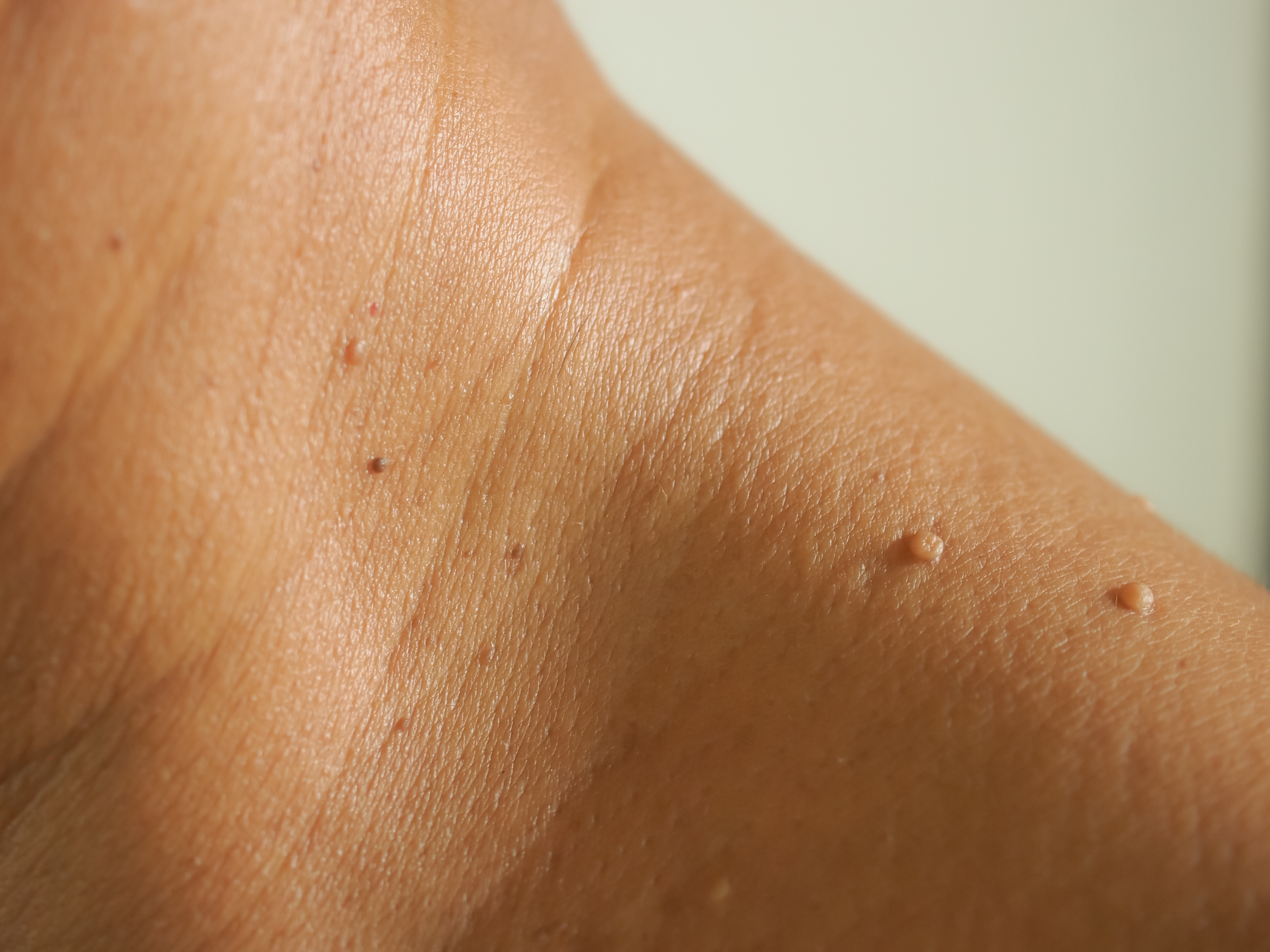Skin tags are non-contagious, harmless growths that hang off your skin. They develop in areas where the skin rubs together, so they are commonly found on sites such as your neck, in your armpits, and under your breasts as well as around the eyes.
No one knows the exact cause for skin tags, but you may be at a higher risk if you:
Have type 2 diabetes
Are overweight
Are older
Wear tight or restrictive clothing that causes rubbing (especially in creases)
Skin tags are usually the same colour as your skin but can sometimes be slightly darker.
